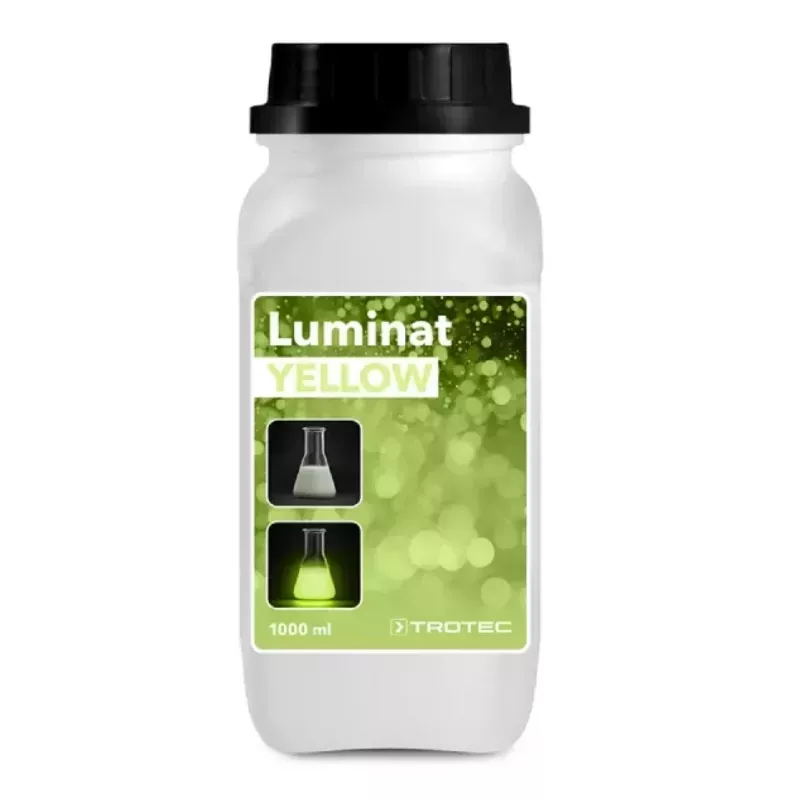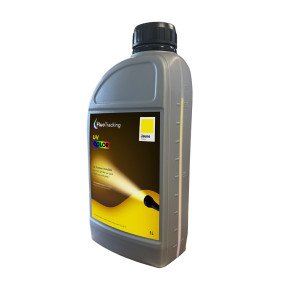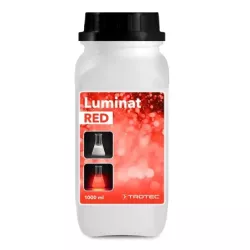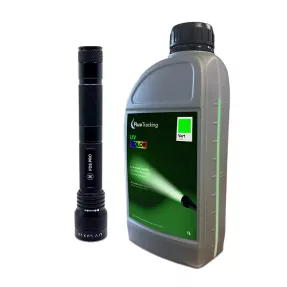Luminat Yellow 1 L - The essential fluorescent tracer dye !
Are you looking for a high-performance solution for tracing and detecting water leaks? Luminat Yellow 1 L is the benchmark in fluorescent colorants. Its concentrated formula guarantees maximum visibility in any situation. It is used by hydrology experts, building technicians and infrastructure specialists to quickly identify anomalies and facilitate intervention. Why choose this tracer dye?
- A formidable efficiency for locating leaks.
- Total compatibility with drinking and waste water networks.
- A concentrated formula for optimum dilution for a variety of uses.
Main features Luminat yellow 1 L
The Luminat Yellow 1 L is a highly concentrated fluorescent dye designed for tracing water networks, inspecting pipes and finding leaks. Its intense yellow hue, visible to the naked eye or under UV light, makes it a formidable ally for quickly locating anomalies and facilitating their repair.
- Ultra-fluorescent: fast, effective detection, even in low-light conditions.
- Concentrated formula: a very small quantity is all you need for optimum results.
- Ecological and biodegradable: has no negative impact on the environment.
- Easy to dilute and apply: integrates quickly into water without leaving residues.
- Composition: Water-soluble organic dye.
- Shade: Fluorescent yellow, visible under UV.
- Solubilization: Immediate, no residues.
- Biodegradability : Environmentally-friendly formula.
- Persistence time : Varies according to type of water and concentration applied.
Ideal for:
✅ Identifying leaks invisible to the naked eye.
✅ Testing the tightness of various structures.
✅ Studying the path of water in natural and urban environments.
Applications and areas of use
Luminat Yellow 1 L is an extremely versatile product, used in many professional sectors:
Ideal for leak testing drinking water and wastewater networks. It enables precise identification of leak points, even in complex circuits. Its intense fluorescence provides a clear reading of anomalies, even in extensive pipe systems. By making it easier to locate water losses, it helps optimize repairs and reduce maintenance costs.
- Roof and terrace control :
An effective solution for detecting water infiltration, avoiding costly structural damage. Particularly useful for flat roofs and waterproofed structures, it enables rapid analysis thanks to its ability to diffuse evenly across surfaces exposed to the elements. It is particularly appreciated in waterproofing audits carried out by construction companies and specialized design offices.
Used by hydrology experts to follow the path of groundwater and assess its circulation over different distances and terrains. Its ability to remain visible even after dilution makes it the tool of choice for hydrogeological studies and flow simulations. It is also used for monitoring stormwater networks and groundwater tables to identify accidental pollution or non-conforming flows.
Very useful for monitoring drainage systems and cooling circuits in industry, enabling faults in piping and pumping systems to be identified. It facilitates the diagnosis of malfunctions in industrial networks and helps improve preventive maintenance. It is commonly used in water treatment plants and infrastructures requiring precise management of hydraulic flows.
- Infrastructure inspection :
An invaluable tool for monitoring bridges, tunnels and sewers, quickly identifying flow faults and areas requiring urgent intervention. It is particularly effective for detecting infiltrations in underground structures and expansion joints. Its application helps to anticipate degradation and plan rehabilitation work before more extensive damage occurs.
Valuable aid for understanding fluid dispersion in sensitive environments, such as marshes, natural basins or drinking water catchment areas. Its environmental safety makes it an ideal dye for monitoring stormwater and protected wetlands. It is also used by researchers to map groundwater flows and identify interactions between aquatic and terrestrial ecosystems.
- Control of agricultural irrigation systems :
Allows detection of areas where water is infiltrating inappropriately, and optimization of irrigation networks to avoid water wastage. Its use ensures even distribution of water over crops and improves the efficiency of drip or sprinkler irrigation systems.
- Analysis of construction sites :
Helps assess water circulation on a site and identify moisture accumulations that may compromise foundation stability. It is regularly used to validate the effectiveness of drainage systems prior to building delivery.
You want to check the watertightness of a roof or identify a defect in a pipe ? The Luminat Yellow is the must-have solution for fast, effective detection !





